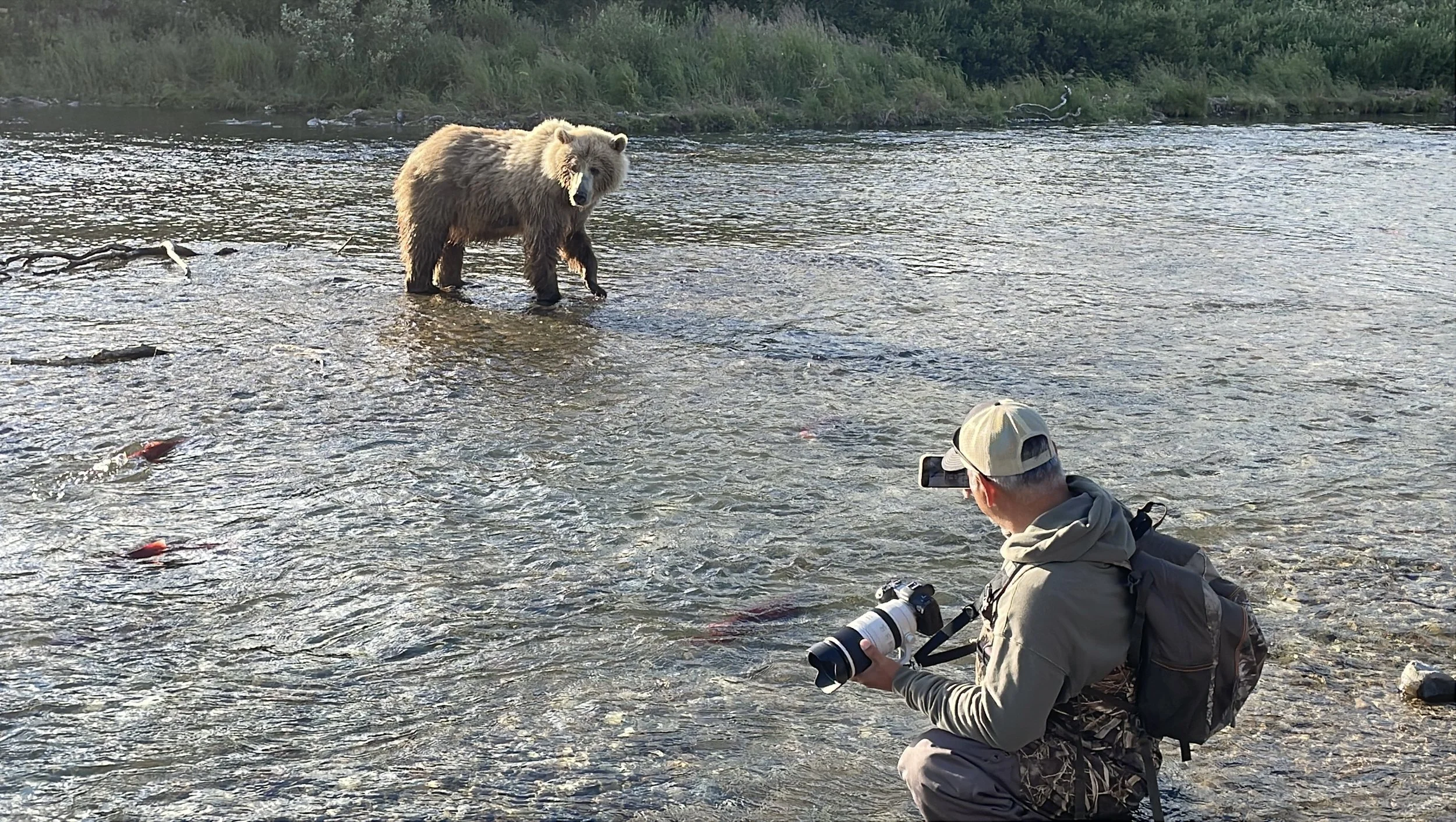There’s something magical that happens when you get a bunch of wildlife people in the same place. Doesn’t matter if it’s at a bar, on a boat between dives, or sitting on folding chairs next to a camp fire, the stories start flowing.
We talk about animals, always.
The ones we’ve seen. The ones that got away. The ones we dream of seeing.
Someone brings up narwhals. Someone else chimes in about jaguars in the Pantanal. Suddenly we’re deep in a conversation about baitball dives in Baja, snow leopards in Mongolia, or the best way to photograph a crocodile without getting bit.
These are my favorite moments.
It’s not just about the animals, it’s about the people who love them.
People who think nothing of hiking for days, diving into cold water, or sitting still for hours just for the chance to be near wildlife. These are my people. And when we trade stories, ideas, and plans — it lights something up in me.
Then the camera talk starts.
What lens did you use for that shot?
Regular wide angle or fisheye?
“Do you go all-in for that curved look, or keep it classic and clean"
We geek out, no shame. Settings, sensors, shutters, sun angles. This is our language.
We swap gear tips. Locations. Talk about permits, timing, behavior, ethics, and instinct.
But more than anything, we remind each other why we do this.
It’s about connection. Not just to the animals, but to each other.
So here’s to the campfire chats.
The late-night idea swaps.
The “what if we went here?” and the “you’ve gotta see this place.”
If you’ve ever shared stories like that with me, thank you.
And if you haven’t yet… I hope we get to sit around and talk about wild things someday soon.















